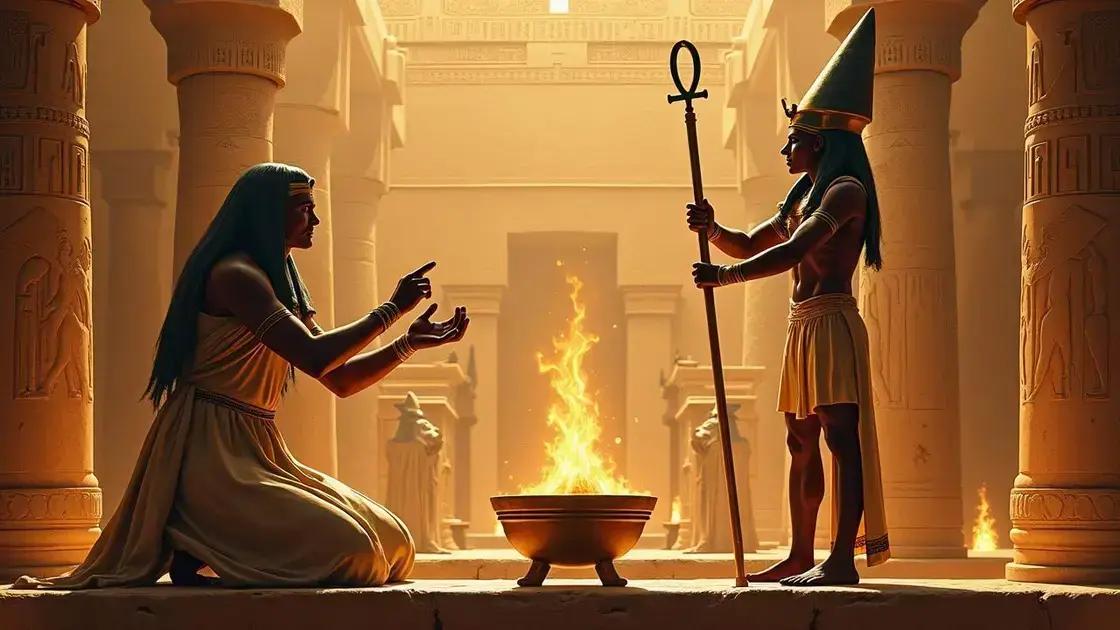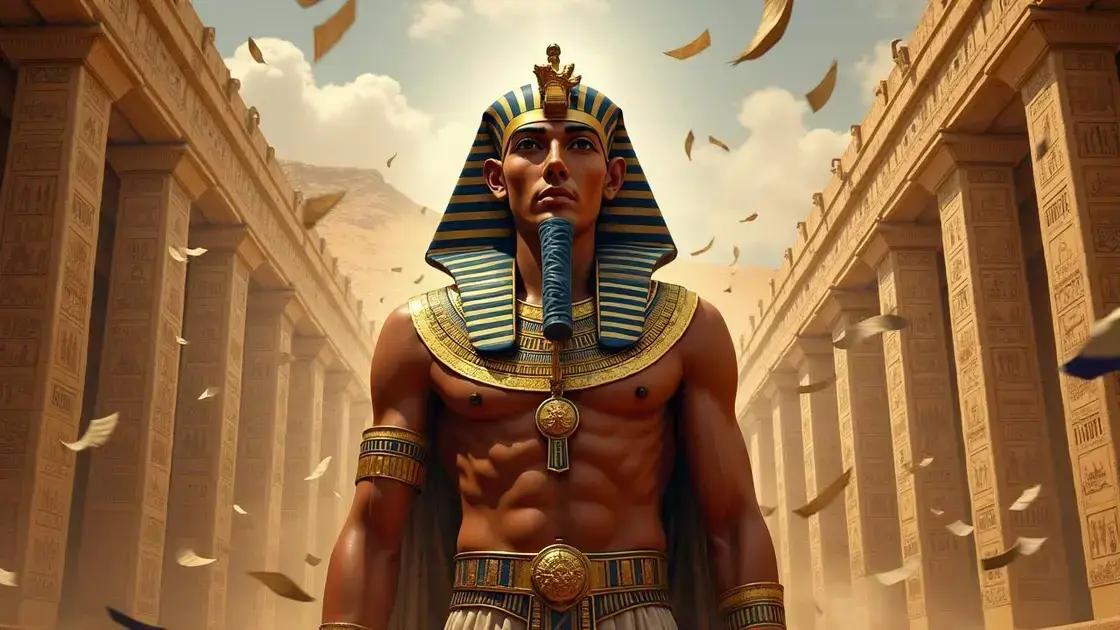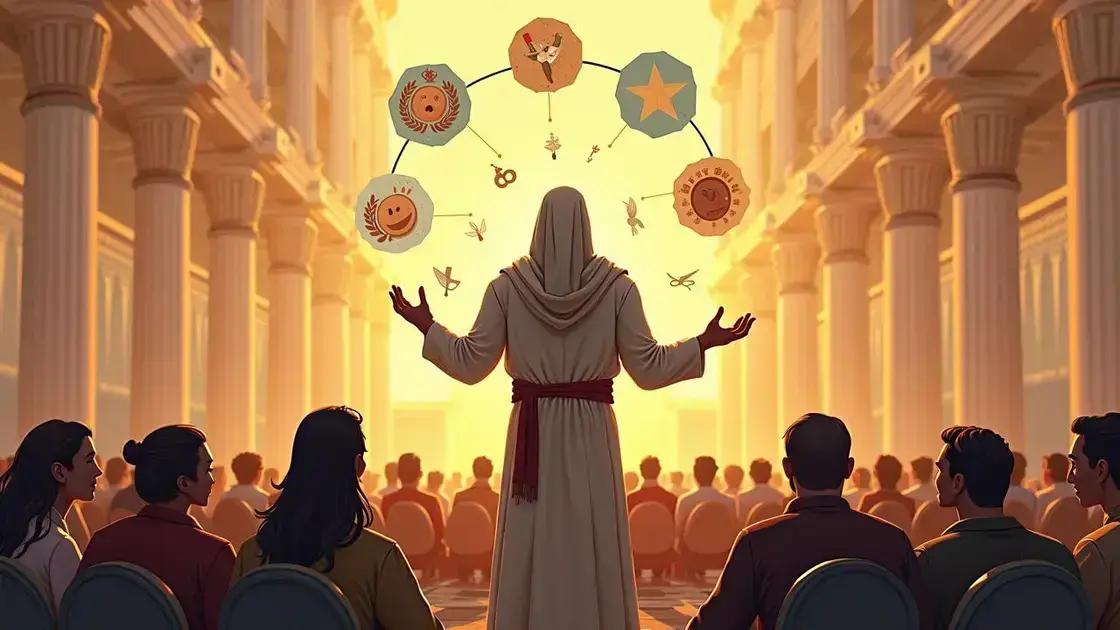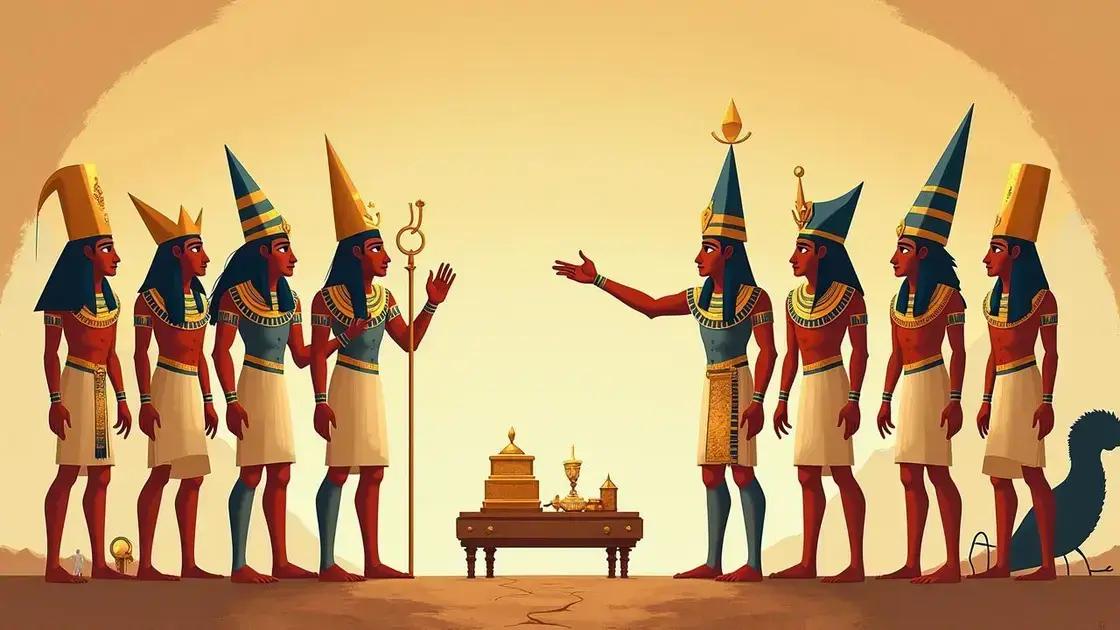The Trick of the Egyptian Pharaohs refers to the clever psychological tactics, rituals, and governance methods used by the Pharaohs to maintain control and authority over their empire, which continue to inspire modern leadership and organizational strategies.
The fascinating Trick of the Egyptian Pharaohs still captivates many today. This ancient wisdom offers insights into the methods and practices that shaped one of history’s most powerful civilizations. As we delve into this intriguing subject, we will explore the historical significance, the techniques used, and how these age-old tricks can be validated in our contemporary world. Join us in uncovering the myths and realities surrounding the effectiveness of these practices.
Understanding the Pharaohs’ Trick

The Trick of the Egyptian Pharaohs refers to the ancient methods and strategies that helped the Pharaohs maintain their power and control over Egypt. These tricks were not just simple illusions, but clever practices that combined psychology, rituals, and the manipulation of resources. Understanding these techniques offers a glimpse into the minds of one of history’s most fascinating civilizations.
Clever Psychological Tactics
Pharaohs often used psychological tactics to influence their subjects. They portrayed themselves as divine figures, using grand ceremonies and symbols like the ankh and the Eye of Horus to reinforce their status. These symbols created a sense of fear and loyalty among the people, ensuring their unwavering support.
Rituals and Ceremonies
Rituals played a significant role in reinforcing the Pharaohs’ power. During festivals, large gatherings showcased the Pharaoh as a central figure, where elaborate performances and displays of wealth captivated the public. This created a communal bond among the people and highlighted the Pharaoh’s importance.
Resource Management
The Pharaohs also excelled in resource management. By controlling food supplies and agricultural production, they ensured stability and minimized dissent. They employed sophisticated techniques in irrigation and farming, which led to economic prosperity. This abundance made it difficult for opposition to arise.
Legacy of the Pharaohs’ Trick
Today, the Trick of the Egyptian Pharaohs can still be seen in various forms of leadership and governance. The use of psychological influence, ritualistic practices, and careful resource management are tactics that resonate in modern society. Learning about these methods allows us to appreciate the depth of ancient wisdom and its relevance today.
Historical Significance and Techniques

The historical significance of the Trick of the Egyptian Pharaohs lies in its ability to unify a diverse nation under a strong central authority. The Pharaohs ran a vast empire, and their techniques helped maintain control over various regions, cultures, and languages. By understanding these methods, we can gain insights into how they managed such an intricate society.
Techniques Used by the Pharaohs
One prominent technique was the use of propaganda. Pharaohs employed art, architecture, and literature to shape public perception. The construction of monumental structures, like the pyramids, was not only a display of wealth but also a message of power and divine favor.
Administrative Strategies
The Pharaohs created an organized government tasked with collecting taxes and managing resources. By appointing trusted officials, they ensured local regions remained loyal. This structure allowed for efficient management and rapid response to any issues, limiting rebellion.
Religious Manipulation
Another key technique involved tying political power to religious beliefs. Pharaohs were viewed as gods on Earth, which gave them the divine right to rule. This belief system encouraged loyalty among the people as they felt they were serving a divine mandate.
Military Tactics
Military might also played a role in maintaining power. The Pharaohs invested in a strong army to protect their empire and expand their territories. Through conquests, they increased resources and demonstrated their strength, deterring potential challengers.
By understanding these significant historical techniques, we see how the Pharaohs established control, shaped culture, and left a lasting legacy on Egyptian civilization.
Modern Applications and Validation

The Trick of the Egyptian Pharaohs can be found in various modern applications. Many leaders today adopt techniques reminiscent of those used by the Pharaohs to build authority and influence. Understanding these strategies helps us validate their effectiveness in today’s world.
Leadership Strategies
Many modern leaders use the psychological tricks employed by the Pharaohs. By projecting confidence and authority, they can inspire loyalty and trust among followers. Techniques such as public speaking and charisma mirror the ceremonial practices of the Pharaohs, effectively leading teams and communities.
Branding and Marketing
The concepts of branding can also be linked back to ancient practices. Just as Pharaohs used symbols and imagery to represent their power, today’s brands create memorable logos and slogans. Effective branding often evokes emotions, similar to how ancient symbols instilled reverence and admiration.
Organizational Management
Organizational structures today often reflect the administrative methods of the Pharaohs. Strong leadership combined with efficient management ensures stability. Companies focus on clear hierarchies and loyal teams, much like the Pharaohs established control through trusted officials.
Validation through Performance Metrics
In modern times, evaluating the effectiveness of these techniques is essential. Performance metrics and data analyses help organizations confirm that applying these ancient strategies yields positive results. Leadership practices derived from the Pharaohs can enhance productivity and foster a strong workplace culture.
By examining these modern applications of the Pharaohs’ tricks, we can see how timeless strategies for influence and control continue to work in various aspects of life.
Myths and Realities of Effectiveness

When discussing the Effectiveness of the Trick of the Egyptian Pharaohs, it’s crucial to separate myths from realities. Many stories exaggerate the power of these ancient techniques, but understanding their real impact provides valuable insights.
Myths Surrounding the Pharaohs’ Influence
It is often said that the Pharaohs had absolute power and control over their subjects. While they held significant authority, numerous factors influenced their reigns. Local leaders and regional governors played substantial roles, which limited the Pharaoh’s total control. Thus, the centralized power was often a myth.
Realities of Power Distribution
In reality, the Pharaohs had to work alongside a network of loyal officials. These officials were essential in managing the large empire. The illusion of a single ruler deftly directing all aspects of society fails to account for the collaboration needed to maintain stability.
Misunderstandings of Ritual Significance
Many believe that the rituals and ceremonies conducted by the Pharaohs were purely for show. Although they served to enhance the Pharaoh’s image, these acts also played practical roles in governance. Rituals promoted social cohesion and instilled national pride, proving their effectiveness beyond mere spectacle.
Evaluating Modern Interpretations
Today, we may romanticize the Pharaohs’ tricks and tactics. However, it is essential to evaluate them in the context of their time. Techniques viewed as effective during the era may not translate directly into modern leadership. Validating their effectiveness demands an understanding of cultural, social, and political landscapes.
By distinguishing between myths and realities, we can appreciate the genuine effectiveness of the Pharaohs’ methodologies while recognizing their limitations.
What We Learned About the Trick of the Egyptian Pharaohs
The Trick of the Egyptian Pharaohs reveals that ancient rulers utilized a sophisticated blend of psychological tactics, rituals, and strategic governance to maintain control over their empire.
By understanding the historical significance and modern applications of these techniques, we can see their effectiveness in various aspects of leadership today. However, it is essential to differentiate between the myths and realities surrounding their influence, recognizing both their strengths and limitations.
As we explore modern interpretations, it becomes clear that while these ancient tactics can offer valuable insights, they also require adaptation to fit our contemporary societal structures.
In conclusion, the Pharaohs’ tricks remain relevant, inviting us to learn from their wisdom while crafting innovative approaches for today’s challenges.
FAQ – Frequently Asked Questions about the Trick of the Egyptian Pharaohs
What is the Trick of the Egyptian Pharaohs?
The Trick of the Egyptian Pharaohs refers to the ancient techniques and psychological tactics used by Pharaohs to maintain control over their empire and influence their subjects.
How did the Pharaohs establish their authority?
Pharaohs established their authority through a combination of propaganda, rituals, resource management, and military might, creating an image of divine power.
What modern applications stem from the Pharaohs’ techniques?
Modern applications include leadership strategies, branding, organizational management, and evaluating effectiveness through performance metrics inspired by the Pharaohs’ methods.
Are there myths associated with the effectiveness of the Pharaohs’ tricks?
Yes, many myths exaggerate the absolute power of the Pharaohs, while the reality involved a complex system of local governance and influence from trusted officials.
Why are the rituals of the Pharaohs considered significant?
The rituals were not just for show; they promoted social cohesion, national pride, and strengthened the Pharaoh’s image as a divine ruler.
How can we validate the effectiveness of ancient techniques today?
Validating the effectiveness of these ancient techniques involves understanding their historical context and evaluating their impact in contemporary leadership and governance.












